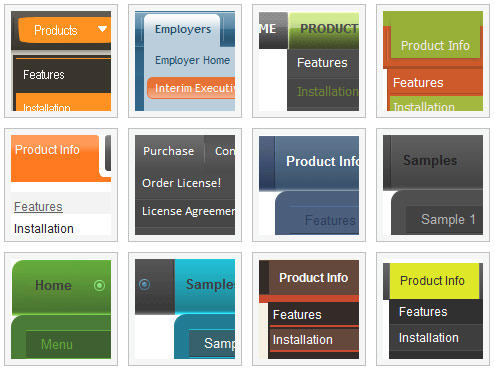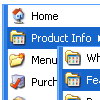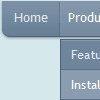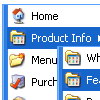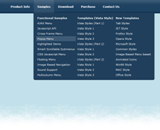Recent Questions
Q: How can we add a css horizontal dropdown menu separator? I’ve tried the following code but it only adds a menu item with the text “|-“ which is unselectable.
dm_ext_addItem(0, 1, ["|-"])
A: You should add separator without "|" symbol:
dm_ext_addItem(0, 1, ["-"], 1);
Q: There seems to be a small checkered rectangle at the top of button menu that I would like to see disappear.
A: See, you have
var tmoveable = 1;
var tmoveImage = "DeluxeMenu/deluxe-tree/img/movepic.gif";
var tmoveImageHeight = 12;
If you want your menu to stay movable you should set the followingparameters to delete rectangle at the top.
var tmoveImage = "";
var tmoveImageHeight = 0;
Q: I need the sub menu to be vertical with the text on top of each other instead of horizontal way as as I have now on my website.
I have tried to change the smWidth & smHeight in the Dimension category but it shows no changes.
A: Please, see menu parameters.
You should set this parameter:
var smOrientation=0;
Q: Both arrow types are visible when my intranet first loads and when I select a top item that is a direct link to a page.
But, as soon as I select any item from a list of sub items that includes subitems with arrows,
the arrow images disappear from vertical menu until I refresh the site.
A: You can use additional parameters to make menu paths absolute:
var pathPrefix_img = "http://domain.com/images/";
var pathPrefix_link = "http://domain.com/pages/";
These parameters allow to make images and links paths absolute.
For example:
var pathPrefix_img = "http://domain.com/images/";
var pathPrefix_link = "http://domain.com/pages/";
var menuItems = [
["text", "index.html", "icon1.gif", "icon2.gif"],
];
So, link path will be look so:
http://domain.com/pages/index.html
Images paths will be look so:
http://domain.com/images/icon1.gif
http://domain.com/images/icon2.gif
Please, try to use these parameters.



